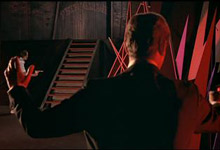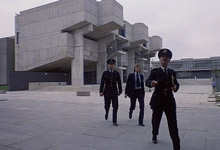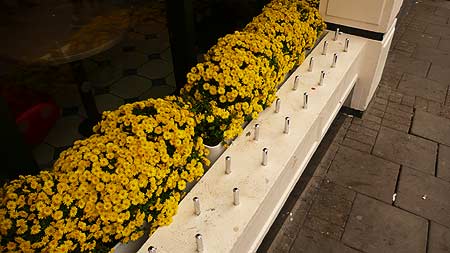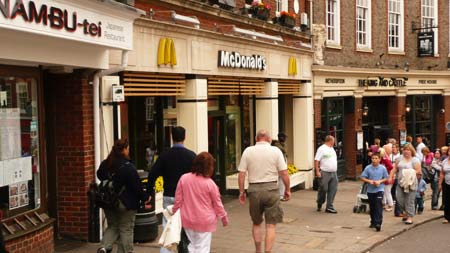GPS-aided repo and product-service systems
![]()
Ryan Calo of Stanford’s Center for Internet and Society brought up the new phenomenon of GPS-aided car repossession and the implications for the concepts of property and privacy:
A group of car dealers in Oregon apparently attached GPS devices to cars sold to customers with poor credit so as to be able to track them down more easily in the event of repossession.
…this practice also relates to an emerging phenomenon wherein sold property remains oddly connected to the seller as though it were merely leased. Whereas once we purchased an album and did with it as we please, today we need to register (up to five) devices in order to play our songs.
…and Kingston University’s Rosie Hornbuckle linked this to the concept of product-service systems:
This puts a whole new slant on product-service-systems, a current (and popular) sustainability methodology whereby people are weaned off the concept of owning products, instead they lease them off the manufacturer who is then responsible for take-back, repair, recycling or disposal. So in that scenario it’s quite likely that a manufacturer will want to keep tabs on their equipment/material, will this bring up privacy issues or is it simply the case that if it’s done overtly (and not in the negative frame of potential repossession), the customer knows about it and agrees, it’s ok? Or will it be a long time before people can overcome the perceived encroachment on their liberty that not owning might bring?
It reminds me of something Bill Thompson suggested to me once, that (paraphrasing) the idea that we ‘own’ the technology we use might well turn out to be a short phase in overall human history. That could perhaps be ‘good’ in contexts where sharing/renting/pooling things allows much greater efficiency and brings benefits for users. Nevertheless, as the repossession example (and DRM, etc, in general) show, the tendency in practice is often to use these methods to exert increasing dominance over users, erode assumed rights, and extract more value from people who no longer have control of the things they use.
See the whole thread so far (and join in!)
Above image of GPS trails (unrelated to the story, but a cool picture) from cmpalmer’s Flickr
The Mosquito, and plans for an odd ‘walk-in virtual world’

Rosie discussed the Mosquito (above image: an example outside a McDonald’s opposite Windsor Castle*) and asked “could we use our design skills and knowledge to influence these sorts of behaviours with a less aggressive and longer-term approach?” while Adrian Short summed up the issue pretty well:
There are a lot of problems in principle and in practice with these devices, but the core problem for me is that they tend to be directed at users rather than uses (i.e. people by identity, not behaviour) and are entirely arbitrary. The street outside a shop is public space and the shop owners have no more right than anyone else to dictate who goes there.
In as much as these things work (which is highly disputed), they are never going to encourage a meaningful debate about norms of behaviour among users of a space. This approach is not so much negotiation as warfare.
Sutton’s Rosehill steps (which Adrian let me know about originally) were also discussed and Adrian brought us the story of something very odd: a ‘virtual world to teach good behaviour to young people’:
Half a mile away, the same council is proposing to spend at least £4 million on a facility that will include a high-tech virtual street environment, a “street simulator” if you like, to teach safety and good behaviour to some of the same young people.
…
“Part movie-set, part theme park, the learning complex will be the first of its kind in the UK and will also house an indoor street with shop fronts, pavements and a road. The idea is to give young people the confidence to make the best of their lives and have a positive impact on their peers and their local community.”
I don’t really know what to make of that. I actually woke up this morning thinking about it assuming that it was a dream I’d been having, then realised where I’d read about it. It sounds like a mish-mash of Scaramanga’s Fun House from The Man With The Golden Gun and the Ludovico Centre** from A Clockwork Orange.


*This particular McDonald’s, with the Mosquito going every evening and clearly audible to me and my girlfriend (both mid-20s) also features a vicious array of anti-sit spikes (below) which rather negate the ‘welcoming’ efforts made with the flowerbed.
**I actually gave a talk about my research to Environmentally Sensitive Design students in this building a couple of weeks ago: it’s Brunel’s main Lecture Centre.

